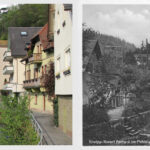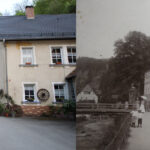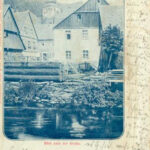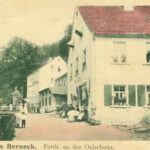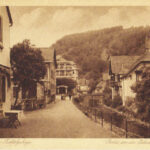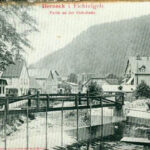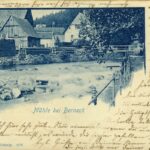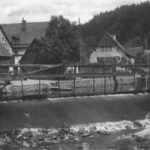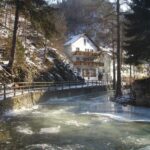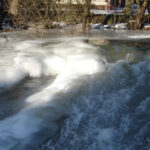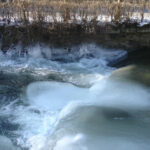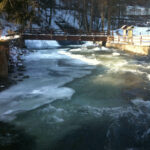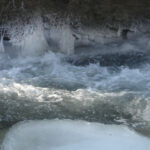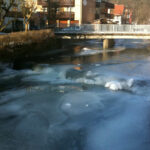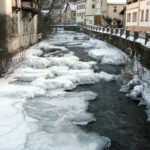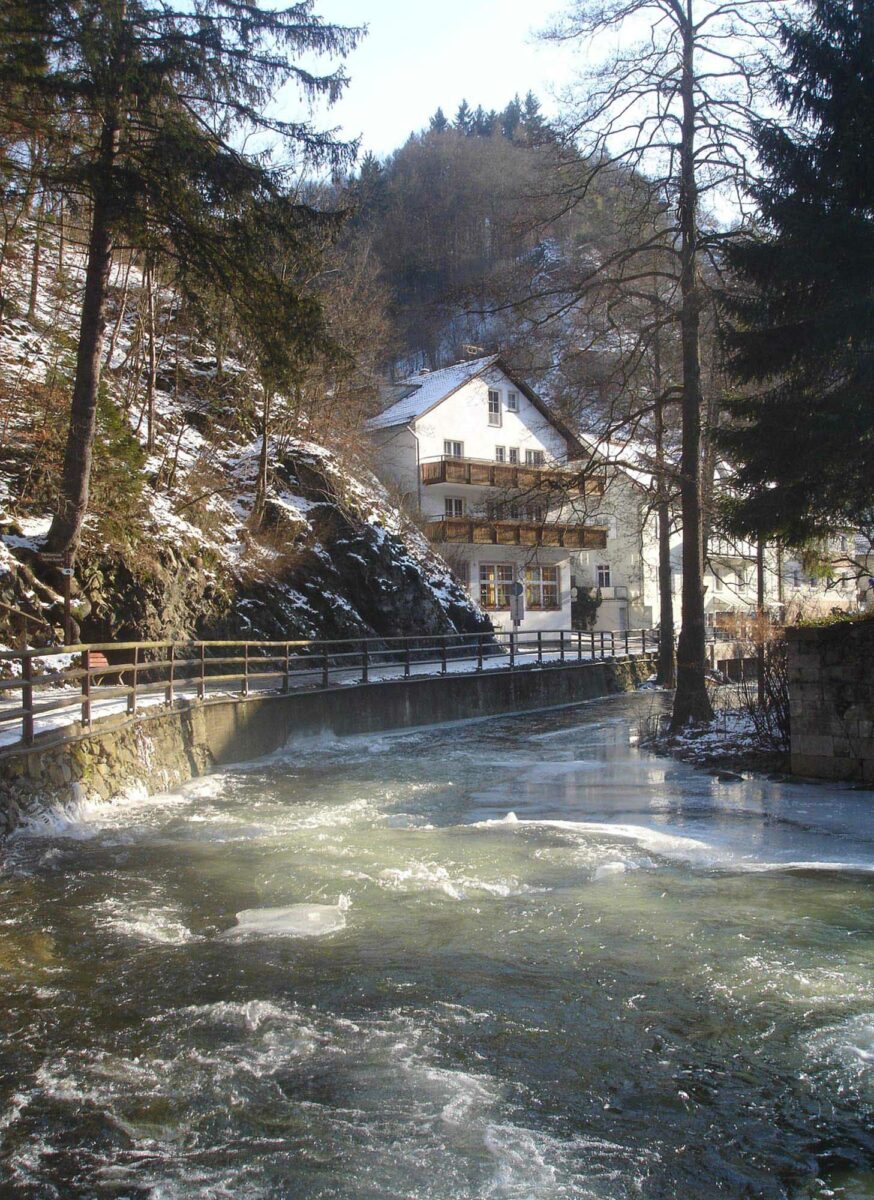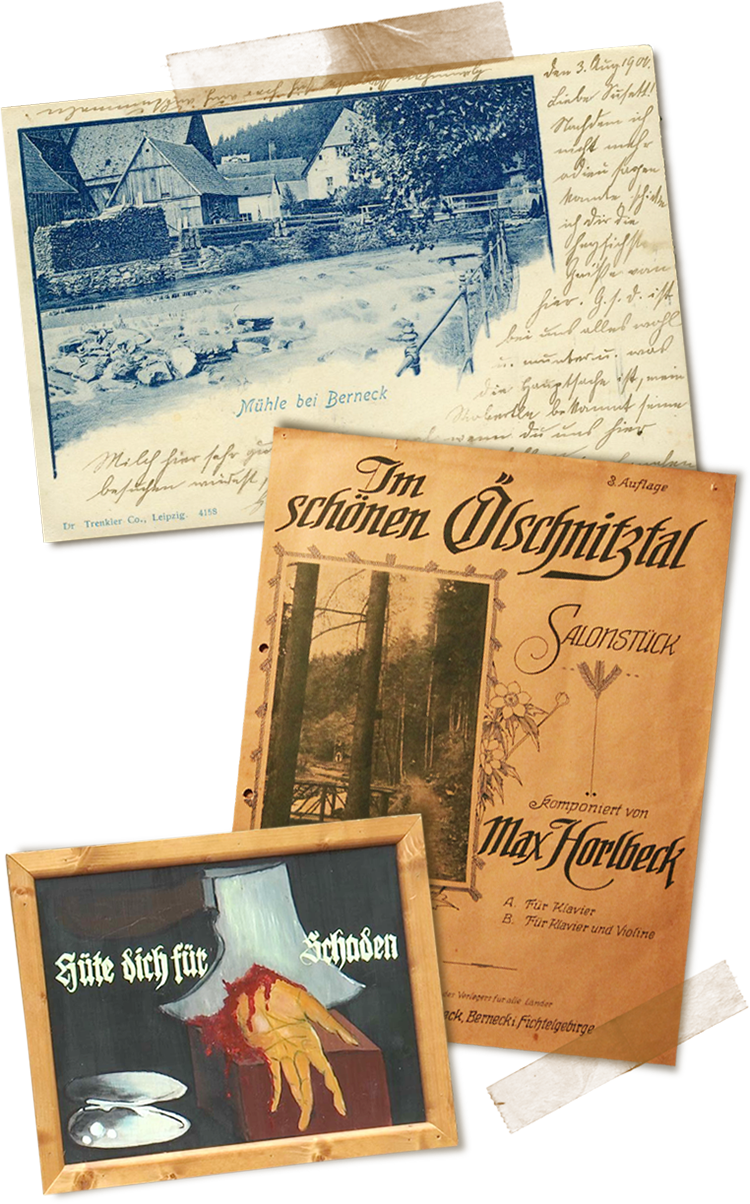
Along the Ölschnitz
Within the town borders of Bad Berneck are not only seven hilly mountains but also seven small rivers (1). Everyone who lives in Bad Berneck, lives near water. Water has always been a dominant feature of the town: in the past, it provided the power for many water mills and today, numerous bridges give the town some of its unique character. Rough and dangerous in the winter, pleasant and full of life during summer, the Ölschnitz always has something interesting to offer.
Its promenade has always been a magnet for visitors, no surprise that the former 200-seater cinema was placed here. Due to the good quality of water, trouts and other creatures live in the river, and in the past it was even used to farm pearl oysters. “best trout river of the Fichtelberg” (quote from 1692). Make sure you visit QR 16 – Natur im Kurpark – for the full story and the myths about the pearls in the river!
(1) Heinersreuther Bach – Heinersreuther Bächlein – Bärnreuther Bächlein – Knodenbach – Rimlasbächlein – Ölschnitz – Weißer Main

The Ölschnitz and the Kurpark
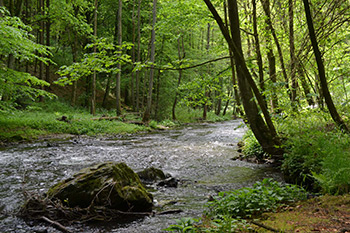
The Ölschnitz flows from Solg at Stammbach in a wide valley to the village Ölschnitz, after Tennersreuth and Böseneck.
From here, the valley becomes narrower. The river meanders and reaches the Entenmühle, then arches around the mountain spur Stein before breaking through the narrow and steep, diabas stone valley with rich flora. It arrives in Bad Berneck, and the Kurpark starts.
The Ölschnitz-Valley between Entenmühle and Bad Berneck is one of the most beautiful valleys of the Fichtelgebirge.
A section of the “Jean-Paul-Trail” (see QR 15) runs along here – a wonderful walk!
After travelling nearly 19 km, the Ölschnitz joins the White Main in Bad Berneck.
Along the river many mill wheels were powered by hydropower.
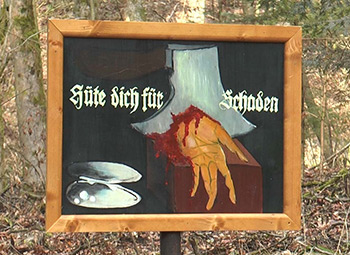
1536 the Bernecker had fishing rights in the “Ölsnitz” – in 1692 it is referred to as “the best trout stream of Fichtelberg”.
In 1732 the Bayreuth Margrave issued a Protection Ordinance for the freshwater pearl mussels in the Ölschnitz.
Between 1733 and 1810 pearls were farmed under the supervision of a Pearl Inspectorate, and after 1810 under the Bavarian forest administration. Illegal pearl fishing was severly punished.
During the period of industrial revolution, water purity was not a primary concern, and consequently, wild life suffered.
Today, species such as crayfish and mussels can be found again, as the water quality has recovered.
The Ölschnitz, like the other rivers and streams that flow through Berneck, helps to take away excess water from the mountains of the Fichtelgebirge.
When the snow melts, natural disasters can occur, the worst floods were in 1909 and 1956.
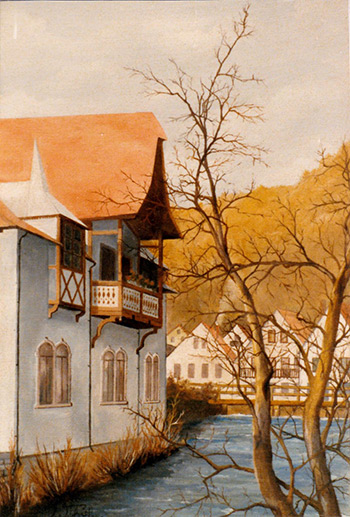
Travel Diary from 1810
Truly are Berneck and its region remarkable in several respects.
For example, the Perlenbach supports, outside of very tasty trout, actual pearl mussels in accordance with its name, for which a proper pearl collector is employed.
Of course you can find 50 mussels and only one with pearls, but a portion of these are of considerable size and exquisite purity.
We saw such examples in the earrings of the aforementioned coaching house lady, and in those one of the residents brought to us from home, whose beauty left us with both respect and astonishment.
Ludwig 1810
Painting by Wolfgang Thiel
Now & Then
Various photographs taken in the past that are matched to ones taken now.
Old
Old photographs and postcards featuring the Ölschnitz.
The Frozen River
A collection of photographs from the winter of 2011/2012 when temperatures fell to minus 25°C.
Along the Ölschnitz Promenade
A time-lapse film featuring the Evangelical Church – the church spire is always central.
Photographed and edited by Dominic Day.
Winter
Amateur footage of the icy river.
The Best Eel in the World
Famous for trout, but there are other animals in the clean water of the river, too, as this small family film shows.
Anekdoten by Ingrid Binecki
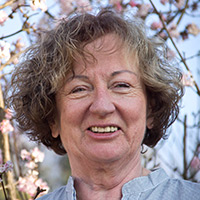
Ingrid Binecki, born in Berneck, began her career in 1966 as a Kneipp Therapist.
Her parents ran the Kurheim Wittig (Kurheim = bed & breakfast with spa elements) on the river Ölschnitz since the early 1950s.
For the QR-Tour Ingrid Binecki tells us anecdotes of spa guests and spa town attractions from the 50s to the 70s.

Anekdote 1



